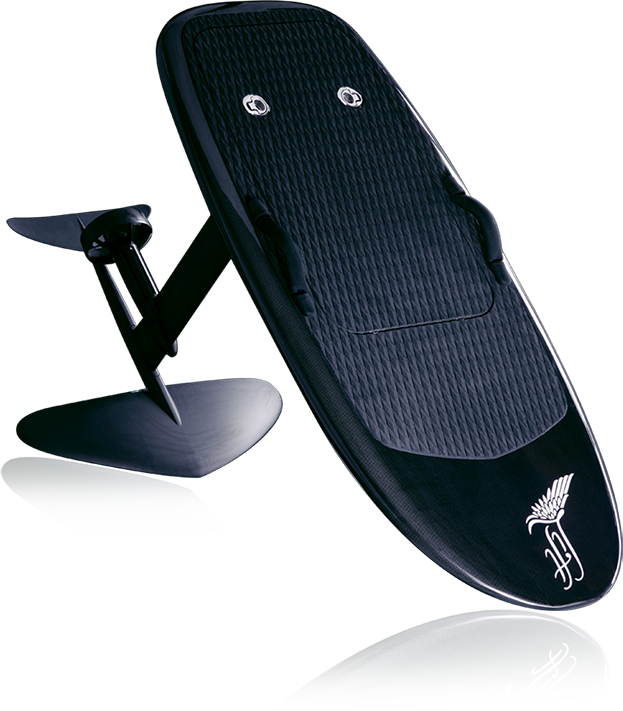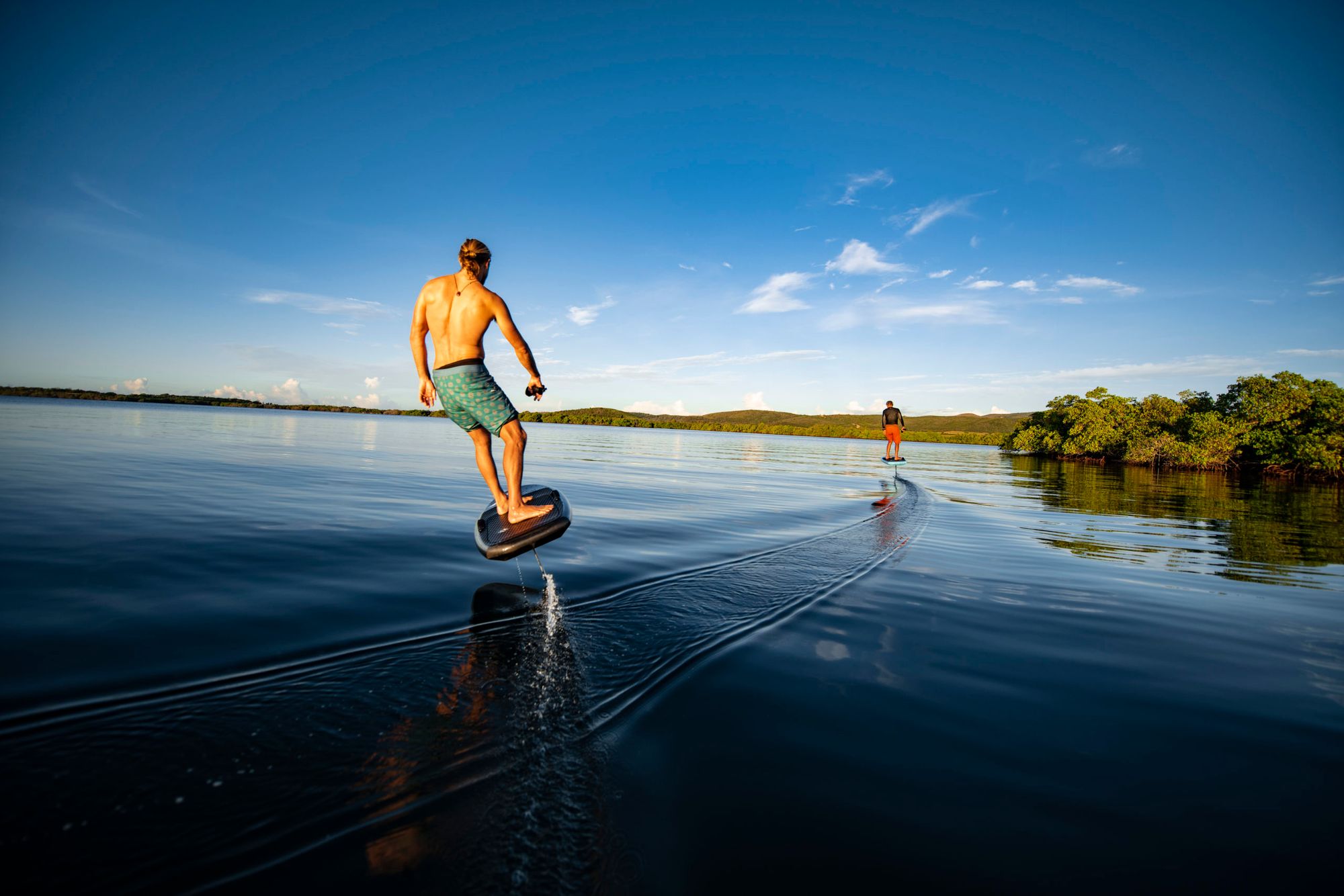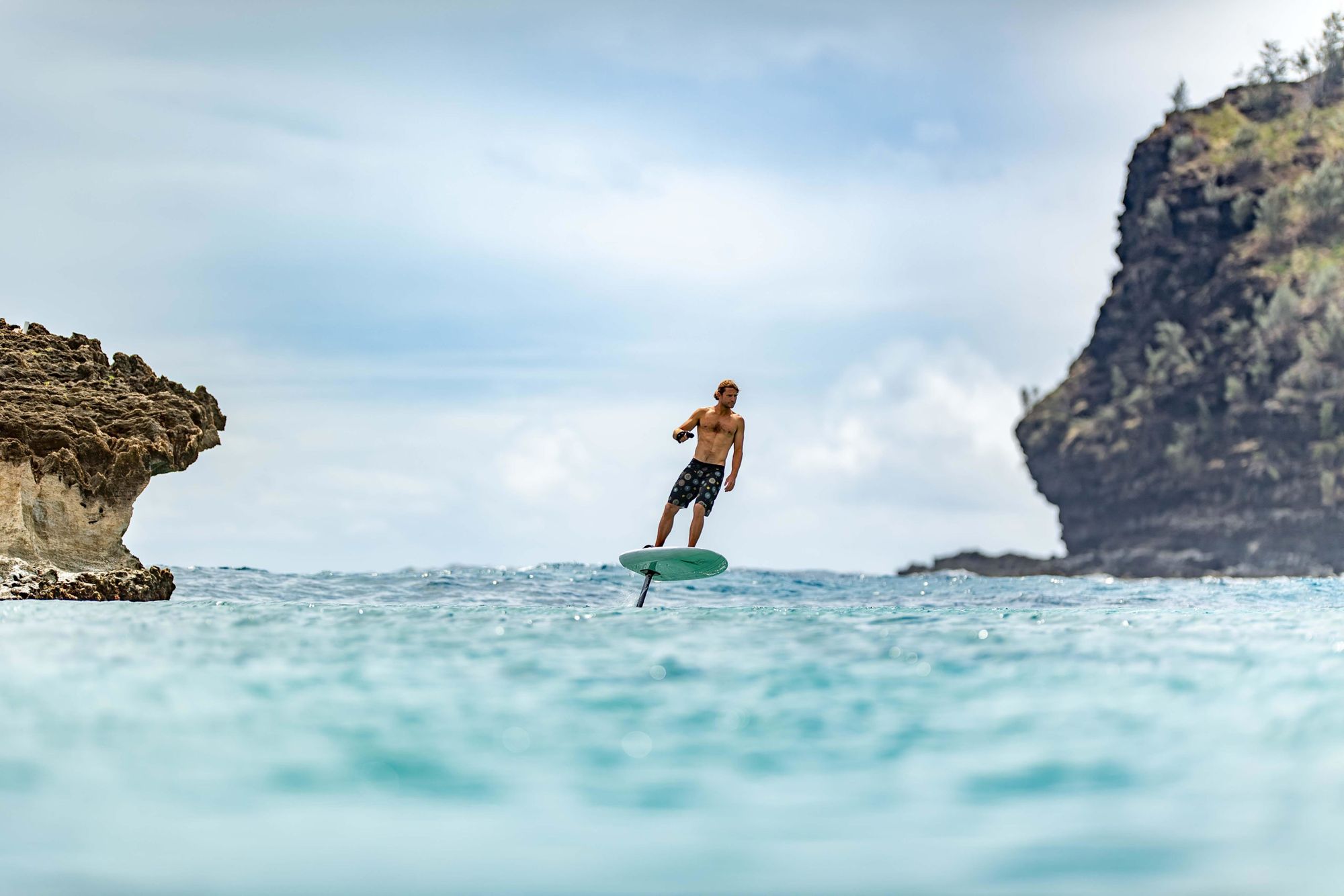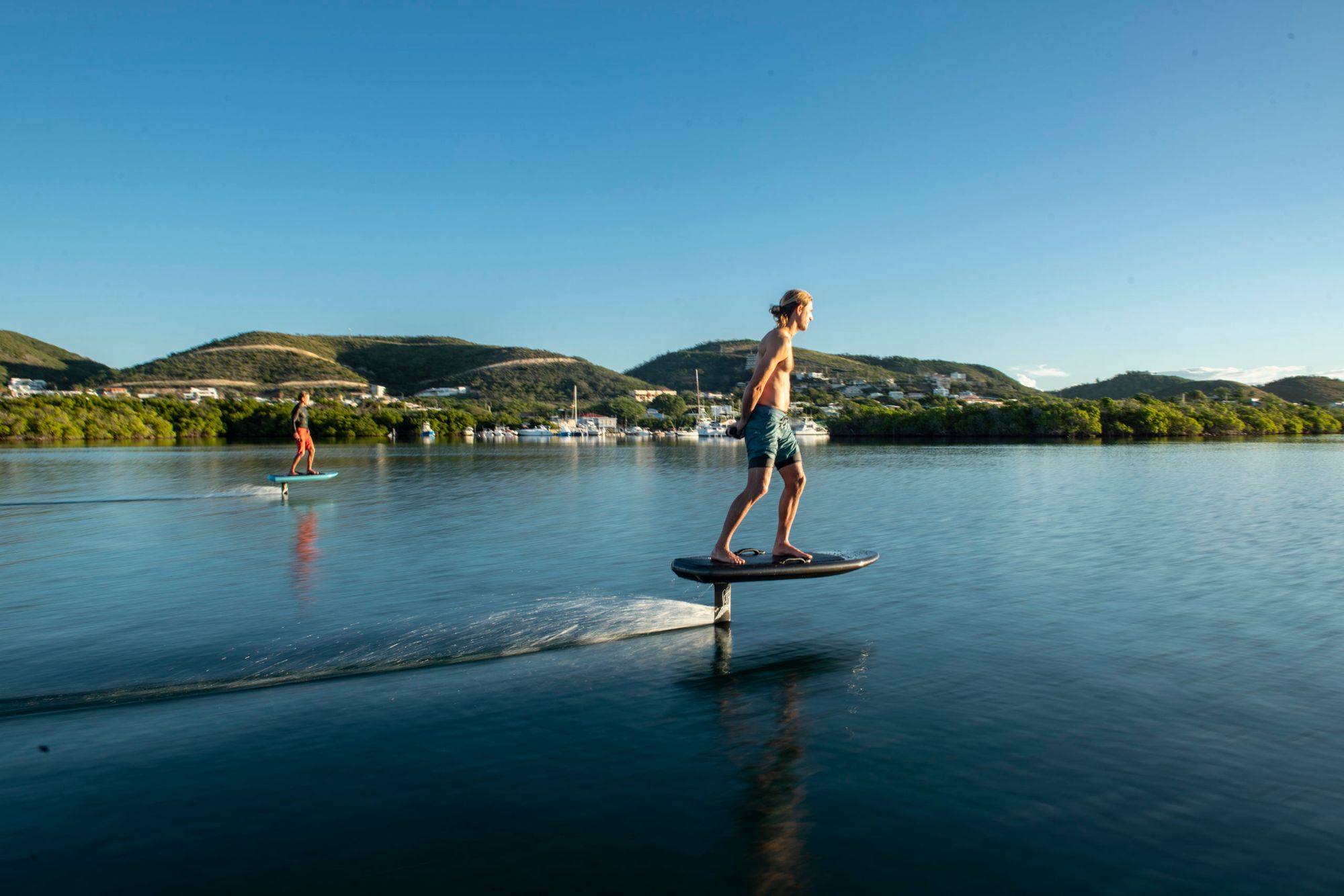Piolets d'Or Announces the "Significant Ascents" of 2023
This list of 68 climbs is effectively a "long list" used to select nominees of the prestigious alpine award.
Lift's electric hydrofoil is a futuristic motorized surfboard that lets you silently soar over the water and reach new frontiers in the outdoors.

The world of action sports suffered a mountainous loss last year with the passing of Jake Burton Carpenter, a true pioneer in the snowboarding industry. But the spirit of innovation and the relentless search for the perfect ride lives on. Nick Leason, the Co-Founder of Lift Foils, continues on in the tradition to invent new equipment that blends ocean sports and reaches new frontiers in the outdoors. (Listen to the full conversation on The Outdoor Journal Podcast).
There is surfing, and then there is flying over the water on a surfboard. Hydrofoiling is the latter. According to Leason, “We’re really venturing into new terrain for water sports.”

Lift leads the way in the design and manufacture of fun on the ocean. Although the concept for motorized surfboards isn’t exactly novel, previous concepts have all sunk well below expectations. As Leason puts it, “motorized surfboards have been around for decades, but they’ve never really been properly introduced to the public. The attention span of the general public is quite short. You have one shot of introducing something cool, and either you’re cool or you’re not cool.”

An avid surfer with an engineering background, Leason started Lift ten years ago in his garage in Isabella, Puerto Rico, the home of several world-class surf spots.
Leason became obsessed with pushing the boundaries of where he could find a great ride - to places like rivers, channels, and even miles off the coast. Through a process of fine-tuning his intuition as a rider, and diving deep into the foundational axioms of fluid dynamics, Leason endeavors to wed the sport of surfing with the experience of flight. “There’s engineering, which is the technical side of how far you can take something before it breaks, or what’s the optimal parameter for something, and then design is a bit more of an art form.”
“Design is an art form.”
A family-owned, father and son business, Lift has created the world’s smallest personal watercraft that allows riders to soar over the ocean. Lift’s electric foil is powered by a lithium-ion battery and controlled by a wireless Bluetooth remote. Staying loyal to his surfing roots, Leason gets out on the water every day to put his ideas to practice and refine both the hardware and software. Just like Tesla cars, the remotes can receive firmware downloads to improve their functionality.

For those of us who have been waiting 30 years for the hovering skateboard in Back to the Future II, that ability is finally here.
Leason has devoted the last decade of his life to engineering e-Foils and launching Lift into a global business because of the dreamlike ride experience (as shown in the video below).
https://www.youtube.com/watch?v=3ah6FQP5ozk
“Getting barrelled is pretty spectacular…it’s an incredible feeling to be engulfed by a wave. There’s nothing really like it. But, foiling and flying, gliding over the water is something unique that has its own feeling to it that’s different than surfing a wave on a shortboard and getting barrelled. It has a third dimension.” It’s so smooth and surreal. It’s very addicting. I have to say that I’m addicted to the sport even after 10 years. It’s taken over my life.”
“Foiling has a third dimension.”
When it comes to e-Foiling, accessibility is paramount. Riders can get their fix in almost any conditions, waves or not, whether the water is flat or choppy. You don’t have to go surveying the globe to chase the perfect swell as many professional big wave surfers do. You can fly every day. “We travel all over the world looking for surf and adventure but sometimes there’s no place like home, where you can go out and catch great waves by yourself or with a couple of neighbors and friends.”
Read next: Mega Swell: Big Wave Windsurfing at JAWS.
It’s more spaceship than surfboard.
With four board sizes and various wing and mast setups, flying with a Lift e-Foil is a highly customizable experience. Larger wing designs give you a more stable platform under your feet, but are relatively slower and less maneuverable than the smaller ones when it comes to carving tight turns. Your personalized setup will depend on your experience level, your size, and where you’ll be riding, i.e. lake or ocean.
Although the idea of paying 12 thousand dollars for a motorized surfboard may disable your equilibrium at first, it’s not an apt comparison - with all the tech that’s packed in there, it’s more spaceship than surfboard. The design of the Lift e-Foil looks like it fell from a SpaceX rocket.

“Even if you don’t have an electric car, when you get out and you ride the Lift e-Foil, you’re probably going to get interested in an electric car, you’re going to get interested in electric mobility because you come to recognize how smooth the power transition is and how quiet and how efficient it is.”
“What I wake up thinking about in the morning is what am I going to build next.”
Along with Lift’s modular, interchangeable setups, it has swappable internal components as well in both the power and propulsion systems. Carbon fiber construction houses a sophisticated electronic battery management system. The advanced remote control software allows you to cruise at 25 mph and stay balanced with subtle fingertip micro-movements. “You get a lot of balance from the motor and so having that quick input at your fingertips is an important aspect of how to balance the board.”
The crux of Lift’s design balancing act is trying to satisfy two distinct demos simultaneously: beginners and pros. How do you create a device that you don’t need to be an experienced surfer to learn to ride, but advanced surfers also would want to use?
“I have to remind myself who I’m building the product for all the time, because sometimes I get really excited about building the product that I specifically want and I know that that’s different than somebody who is just getting into the sport, so I build both.” I try to build something that’s easy for people to use that tends to be a really fun ride that offers the ability to upgrade with smaller components and small modifications into something that I’m riding.”
With a beginner’s setup, a first-timer can learn to hover over the water in their very first session. Standing up on a Lift is way easier than getting up on a surfboard. With the underwater wing acting as a keel, it’s more stable. Just open your arms to bear hug the sky like Laird Hamilton, rock your weight forward and backward until you find the sweet spot and suddenly - SILENCE - you’re flying.
Because 12k is a considerable investment, Leason recommends trying before you buy. “We have a network of affiliates that work with us directly and they do lessons and demos and so our campaign is not ‘Go buy an e-Foil,’ it’s ‘Go try one.’”
Read next: Surfing the Dream in Taiwan

Since Lift was first to hit the market, competitors have come from low and high in a game of industry copy-cat with Lift’s modular architecture.
Yet, Leason is confident that Lift will maintain its inside line on the competition. “Yeah they’re tech giants and they’re well funded, but they don’t surf.” That’s the beauty of our business. We know what we want.”

Leason envisions a lifetime of innovations stemming from the futuristic and silent battery-powered concept. “I’m building these toys for my own enjoyment, selfishly. Once I think it up, I’m like I gotta have that!”
In this episode of The Outdoor Journal Podcast, Leason discusses how to customize a ride setup for your own personalized experience, the challenge of satisfying both beginners and more experienced riders, and why Leason is so confident that he will continue to out-innovate the competition. (Listen to the full conversation on The Outdoor Journal Podcast).
Learn more at LiftFoils.com
2nd best newsletter in the universe